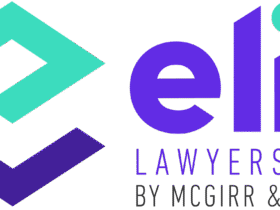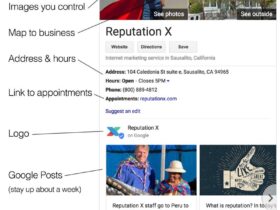The facts
In 2013, Shandee Renee Blackburn, a 23 year old woman, was murdered in Mackay whilst walking home alone from her workplace. She had been stabbed 23 times in multiple places including the neck, head, and chest, including defensive wounds on her arms.
On 4 September 2014, Shandee Blackburn’s ex-boyfriend John Peros was arrested and charged for her murder. He was subsequently acquitted by a jury.
A Coronial inquest into Shandee Blackburn’s murder took place in 2019. The Coroner considered evidence that was not before the jury in 2017, including additional and enhanced CCTV recordings and police questioning of Peros about his movements. Peros initially refused to give evidence on the ground that the evidence would tend to incriminate him.
On 21 August 2020, the Coroner concluded that:
“Miss Blackburn died due to injuries sustained in an incident involving violence with Mr John Peros who used a bladed instrument.”
The Coroner’s findings were widely reported, including by newspapers and broadcasters, and in their online publications which have remained online since their first publication and remain available online.
On 14 October 2021, Hedley Thomas and his employer Nationwide News Pty Ltd began publishing an investigative podcast into the murder of Shandee Blackburn called Shandee’s Story.
The podcast series:
→ examined the nature and quality of the evidence called at Peros’ criminal trial and at the coronial inquest, including deficiencies in the DNA evidence that was presented at his trial;
→ made the point that far more evidence was available to the Coroner than was available to the jury; and
→ published parts of Thomas’ interviews of relevant witnesses, including investigators and experts and Shandee Blackburn’s sister Shannah.
Peros sued Hedley Thomas, Nationwide News Pty Ltd and Shannah Blackburn for defamation with respect to publication of Episode 13 of the podcast.
Hedley Thomas, Nationwide News Pty Ltd and Shannah Blackburn argued that before Episode 13 of the podcast was published:
→ Peros’ reputation had been effectively destroyed or “decimated” by the widespread reporting of the Coroner’s finding that Shandee Blackburn “died due to injuries sustained in an incident involving violence with Mr John Peros who used a bladed instrument”; and
→ listeners to Episode 13 would already have formed an adverse view of Peros from having listened to the first 12 episodes.
An order was made in accordance with s 10A of the Defamation Act 2005 (Qld) for the determination of the serious harm issue before the trial of other issues.
Relevant law
MEANING OF DEFAMATORY
A plaintiff is said to have been defamed if a publication causes the reasonable person to think less of them: Reader’s Digest Services Pty Ltd v Lamb [1982] HCA 4.
In Random House Australia Pty Ltd v Abbott [1999] FCA 1538, Beaumont J stated:
“The test for what may be defamatory at common law is well established. A publication, without justification or lawful excuse, exposing a person to hatred, contempt or ridicule, calculated to injure that person’s reputation, is a libel. But this is not to be taken as an exhaustive statement. A person may be defamed by an imputation of a disability in the performance of the functions of his or her office, although the imputation does not expose him or her to hatred, contempt or ridicule. A false statement about a person to his or her discredit is defamatory. Thus to attribute to a person a want of capacity as the holder of an office will be defamatory. The mere imputation of a lack of ability to discharge the duties of that office is sufficient. It is not necessary that there should be an imputation of immoral or disgraceful conduct (per Brennan J in John Fairfax v Punch [1980] FCA 100; (1980) 31 ALR 624 at 632 – 633 citing Lord Herschell in Alexander v Jenkins [1892] 1 QB 797 at 800). Thus, the substantive legal issue here may be expressed as whether the material complained of was defamatory of the plaintiffs in that it was to his or her “discredit … [tended] to lower him [or her] in the estimation of others … to expose him [or her] to hatred, contempt or ridicule, or to injure his [or her] reputation in his [or her] trade or profession” (see Chakravarti v Advertiser Newspapers (1998) 193 CLR 519 per Gaudron and Gummow JJ at 545 quoting Gatley on Libel and Slander, 8th ed. (1981), par 31)”
To be defamatory, the matter must injure the plaintiff’s reputation by lowering them in the estimation of others, exposing them to hatred, contempt or ridicule or causing them to be shunned or avoided.
Defamatory meaning can arise from the natural and ordinary meaning or true innuendo of the matter. True innuendo refers to matter which is defamatory as a result of an audience’s knowledge of certain extrinsic facts.
Section 10A of the Defamation Act 2005 provides that:
“10A Serious harm element of cause of action for defamation
(1) It is an element (the “serious harm element” ) of a cause of action for defamation that the publication of defamatory matter about a person has caused, or is likely to cause, serious harm to the reputation of the person.(3) The judicial officer (and not the jury) in defamation proceedings is to determine whether the serious harm element is established.
(4) Without limiting subsection (3) , the judicial officer may (whether on the application of a party or on the judicial officer’s own motion)—
(a) determine whether the serious harm element is established at any time before the trial for the proceedings commences or during the trial; and
(b) make any orders the judicial officer considers appropriate concerning the determination of the issue (including dismissing the proceedings if satisfied the element is not established).
(5) If a party applies for the serious harm element to be determined before the trial for the proceedings commences, the judicial officer is to determine the issue as soon as practicable before the trial commences unless satisfied that there are special circumstances justifying the postponement of the determination to a later stage of the proceedings (including during the trial).
In Associated Newspapers Ltd v Dingle [1964] AC 371, it was held a defendant cannot rely in mitigation of damages on other publications that are alleged to have harmed the claimant’s reputation as proof of a bad reputation.
The general rule is that a bad reputation must be proven by reputation witnesses. Lord Radcliffe stated:
“It may still be that in a proper case a man’s bad reputation can be proved by giving evidence of some incident of notoriety without a witness or witnesses being called to say what character he enjoys in the estimation of themselves or others than themselves …”
Queensland Supreme Court decision
Justice Peter Applegarth held that despite Dingle, prior publications of Peros were relevant to the question of causation of loss of reputation:
In principle, proof and disproof of causation should be the same for harm to a back as for harm to a reputation. Proof of harm may be aided by inferences supported by the evidence. One might be about the harm that a mass media publication of a serious defamation is apt to cause to the plaintiff’s reputation among persons to whom it is published and to whom it spreads on the grapevine. A defendant in either type of tort case should be permitted to call evidence that the claimed harm was not caused by its conduct but was caused by another incident or incidents, or that the harm that its conduct caused was not as serious as the plaintiff claims because the plaintiff had already been seriously injured as a result of those earlier incidents. In that context, evidence of earlier incidents should be admissible on the issue of causation and to isolate the harm that the defendant’s conduct caused.
If earlier publications are admissible as relevant to the issue of causation, then there seems no sound reason why the defendant cannot rely on inferences about the harm that the earlier publications were likely to cause to the plaintiff’s reputation because of the gravity of the matters conveyed, the extent of publication, and the authority of the source of the relevant statement. [141] Subject to considering Dingle in greater detail and other authorities on causation and mitigation of damages on account of a prior bad reputation, my provisional view is that the defendants’ evidence to which the plaintiff objects is admissible on the issue of causation in a case in which the plaintiff seeks damages for harm that he claims was caused only by Episode 13 and that the evidence permits the court to isolate. My provisional view is that I should not uphold the plaintiff’s “Dingle admissibility” objections as recorded in MFI-B.
Consequently, Applegarth J found that serious harm had not been made out:
The evidence of earlier publications, including the first 12 episodes, inferences about their likely effect on listeners’ estimation of the plaintiff, and the evidence of the actual effect which an earlier episode had on his reputation at the mine site, lead me to conclude that, by the time Episode 13 was first published, the plaintiff had a damaged reputation in the relevant sector among listeners to the podcast. He would have been viewed by listeners to be the person who killed Ms Blackburn. They would not simply have known him to be the person who a Coroner found to be Ms Blackburn’s killer. They would have formed the view, based on the evidence and arguments placed before them in the series, that the Coroner’s finding was correct.
If one infers that Episode 13 caused some harm to reputation in fortifying or reinforcing a view already held, or even convincing some listeners of a view that they already strongly held, then I am not persuaded that the extent of that harm amounts to “serious harm” for the purpose of s 10A.
I am not persuaded that Episode 13 probably caused a significant change in the strength of listeners’ beliefs about the plaintiff’s responsibility for the death of Ms Blackburn. However, if it did, I am not satisfied that any further harm to his reputation in that regard amounts to “serious harm” for the purpose of s 10A.
The plaintiff has not discharged his burden of proof that Episode 13 caused serious harm to his reputation…
For essentially the same reasons, I am not satisfied that Episode 13 is “likely to cause” the plaintiff harm in the future. One can no more expect listeners in the future to “jump in” at Episode 13 without knowing anything about the earlier episodes or about the plaintiff than one can conclude that this happened in the past. Episode 13 is not labelled something like “Summary and Conclusion” to which an eager listener would go first. It is the 13th of 20 episodes, and one would expect a person interested in the series to listen to at least the start of Episode 1.
The plaintiff submits that Episode 13 is “likely to cause” him harm in the future because, even if the Coroner’s findings were notorious in 2020, knowledge of them will fade or be non-existent in, say, 2026. I am not persuaded of this, if for no other reason than the Coroner’s findings feature in Episode 1, and are not likely to be forgotten by a listener to Episode 1.
Accordingly, Applegarth J ordered that the proceeding be dismissed.
Conclusion
This is an important case with respect to the requirement of ‘serious harm’ pursuant to Section 10A of the Defamation Act. It confirms that a plaintiff’s pre-existing reputation is highly relevant to the question of serious harm where there have been prior defamatory publications concerning them.
This case parallels that of Bruce Lehrmann, who also sued for defamation after avoiding conviction in a criminal trial, only for his claim to blow up in his own face. People like Peros and Lehrmann don’t know when to not worry about their hats.
Posted on Categories Defamation













